The fall of 2013 featured some major developments for Marvel Studios, particularly regarding its relationship to its new parent company, Disney. First, on 24 September 2013, the first episode of Agents of S.H.I.E.L.D. aired on the Disney-owned ABC network. The pilot episode was directed by Joss Whedon of The Avengers (2012), and was written by Whedon, Jed Whedon and Maurissa Tancharoen. The latter two people would be showrunners on the Marvel Studios show for its 100+ episode run. The pilot resurrected Agent Phil Coulson (Clark Gregg) to lead a team of S.H.I.E.L.D. agents in a globe-trotting adventure series through the Marvel Cinematic Universe (MCU). Agents of S.H.I.E.L.D.‘s first season is tied closely with the MCU films, directly referencing The Avengers, Iron Man 3 (Black, 2013), Thor: The Dark World (Taylor, 2013) and Captain America: The Winter Soldier (the Russo Brothers, 2014). Over time, it drifted away from connections to the films and told its own stories. It has been a fairly successful foray into live-action television for Marvel, whose television output has always paled in comparison to DC properties. Television and Netflix series from Marvel would expand over the next several years, but Agents of S.H.I.E.L.D. began that trend. I will make note of the beginning of most Marvel series moving forward, but my articles will continue to focus on Marvel Films primarily.
Speaking of films, the other major development for Marvel Studios came with the release of Thor: The Dark World in November. Although Disney purchased Marvel Entertainment, and therefore Marvel Studios, at the end of 2009, the studio had previously made a distribution deal with Paramount Pictures. The next three MCU films were all fully distributed by Paramount. Disney renegotiated the deal after that allowing Disney to distribute The Avengers and Iron Man 3 while sharing profits with Paramount and including Paramount logos. Thor: The Dark World was the first Marvel Studios film to be distributed wholly by Disney, although casual filmgoers might not have even realized. The only obvious change was the Marvel Studios logo becoming the only logo to appear at the beginning of its films. Disney strengthened the Marvel brand by not including its branding, presenting Marvel as a distinct, independent studio that happens to have ties with Disney. This approach would be repeated with the Star Wars films. Disney had purchased Lucasfilm just one year earlier, and all Star Wars films since have featured only the Lucasfilm logo at the beginning.
From a distribution standpoint, this made Thor: The Dark World significant, and Marvel Studios certainly wanted it to be a big success. This was the third film to feature Thor and Loki in as many years following Thor (Branagh, 2011) and The Avengers (Whedon, 2012). The appearance of Loki in particular was interesting from a shared universe perspective. He was the villain of the biggest superhero film of all time, and now audiences had the chance to see the direct fallout of his failed attempt to conquer Earth in The Avengers. Don Payne, one of the screenwriters of Thor, was hired to begin developing ideas for a second Thor film in April 2011, one month before the first film opened. The Thor sequel was officially announced in June 2011 with a July 2013 release date, giving filmmakers just over two years to make the film. Kenneth Branagh, director of Thor, was concerned about such a short production timeline and chose not to return.
In October 2011, Marvel hired Patty Jenkins to direct the Thor sequel. Jenkins had not directed a feature film since the critically-acclaimed Monster (Jenkins, 2003), but had strong ideas for Thor. She reportedly wanted to tell a story inspired by Romeo and Juliet, having Thor pine after his romantic interest from the first film, the human Jane Foster, while Thor’s father, Odin, refuses to allow them to be together. The villainous dark elf Malekith would take advantage of Odin, keeping Thor from Earth to wreak havoc there. It was an interesting idea, although it hinged on the Thor/Jane romance, the weakest element of Thor. Marvel producers didn’t like the story and insisted Jenkins take the film in a different direction. Jenkins grew concerned that she didn’t fully believe in the new direction and, rather than create a subpar film as a result, she left the project in December 2011. Jenkins of course went on to great superhero success with Wonder Woman (Jenkins, 2017), but her departure reportedly left a mark on the production. Female lead Natalie Portman championed the hiring of Jenkins, and lost much of her interest in the film when Jenkins departed.
The production quickly rebounded with the hiring of Alan Taylor, a prolific director of such prestigious television series as Homicide: Life on the Street, The Sopranos, Sex and the City, Mad Men and Game of Thrones. Taylor had just finished directing four of the ten episodes of Game of Thrones‘ second season before taking on The Dark World, and he found similarities between the two projects. He aimed to examine the personal issues that underlie the epic, fantastical elements. He also wanted to move beyond the gleaming, scarcely populated realms of Branagh’s Thor to make the realms of Thor: The Dark World more gritty, grounded and lived-in. Taylor seemed to be a good choice, with his years of strong television work preparing him for the jump to big-budget filmmaking. He was paired with screenwriters Christopher Markus and Stephen McFeely, who had written Captain America: The First Avenger (Johnston, 2011) for Marvel Studios. That, combined with a great pre-existing cast and the addition of Christopher Eccleston as the villain, Malekith, seemed to be a recipe for a great film.
But Thor: The Dark World is not a great film, and people on both sides of the camera were disappointed. Taylor felt that he had a lot of freedom during filming, but lost that freedom in post-production. There was a great deal of additional photography during post-production, which is standard for big-budget films, but a main focus of that additional photography was increasing the role of Loki, adding two significant scenes featuring the character. Meanwhile, Malekith’s role was cut down dramatically, which stripped the character of any clear motivation and seriously irked Eccleston, who was already dissatisfied with the hours of makeup he endured for the role. Portman and Idris Elba have both reported negative experiences on the film. Most significantly, Thor: The Dark World began star Chris Hemsworth’s frustration with the depiction of Thor in the MCU, as he felt trapped by an unfunny, uninteresting interpretation of the character.
The fascinating thing about Thor: The Dark World, however, is how close it comes to working as a viable story. The main villain, Malekith, has no clear motivation or plan. He seems to be evil for the sake of being evil and is often cited as the MCU’s least-interesting villain. The McGuffin is a red floating liquid called the Aether. How the Aether works, or how Malekith plans to use it, is never fully explained. Finally, much of Thor’s motivation stems from his love of Jane Foster, which is not convincing in the least and, thus, nearly sinks the film. All of these undefined or misfired elements make the film weightless and forgettable. And yet, I always find myself thoroughly entertained by it. At this point, Marvel was so good at creating entertaining blockbuster films and making it seem so effortless, that it’s easy to overlook flaws while watching the studio’s films. All of the pieces are in the right place: a dangerous villain, a universe-ending threat, a star-crossed romance. It’s only after-the-fact that you realize none of them made any sense or had a real impact. There’s well-staged and sometimes inventive action, compelling performances, and much humour to carry the film past the underwritten parts. Case in point: the two big Loki scenes that were added during post-production. They’re not necessary to the plot, and perhaps even detract from it, but they are fantastic scenes.
And so, Thor: The Dark World represents yet another major development for Marvel Studios. This was the moment at which it became so adept at creating blockbuster entertainment that even a deeply flawed film such as this nearly succeeds on charm and craft alone. Such an achievement should not be praised, but it’s impressive, nonetheless.
After the regular Marvel Studios logo with a terrific new fanfare from composer Brian Tyler, Thor: The Dark World opens with a prologue narrated by Odin (Anthony Hopkins). Five thousand years ago, in the realm of Svartalfheim, the ruler of the Dark Elves, Malekith (Christopher Eccleston), planned to use the mysterious Aether to revert the universe to darkness. What does that mean? Why does Malekith want to do this? How will the Aether accomplish this? Nothing is explained. The film is content with viewers understanding that Malekith is bad, a dark universe is bad, and the Aether is powerful. Again, this shorthand approach to blockbusters almost works. Malekith nearly accomplishes his task during the Convergence, when all of the Nine Realms are briefly aligned, and the barriers between them are weakened, but his forces are attacked by the army of Asgard led by Thor’s grandfather, Bor (Tony Curran). Bor transports the Aether away to a secret location, and Malekith sacrifices most of his army to escape. This prologue was added in post-production and was created almost entirely digitally by Tim Miller’s Blur Studio. Test audiences were reportedly confused about Malekith’s background, so a prologue was added, but it fails to explain his background.
Jump to immediately after the The Avengers film, and Loki (Tom Hiddleston) is chained and presented to Odin. The scene is strong, with Hiddleston and Hopkins firing at each other over Loki’s actions. He shows no remorse and asks for no forgiveness from Odin. This is one of the two major Loki scenes added in post-production, and it’s hard to imagine the film without it. It demonstrates Loki’s growth from Thor, to the point where he has cut himself off from his family and must now suffer the consequences on Asgard. Also, consider the fact that two major prologue scenes needed to be added to the film for clarification after the test screenings. This makes me think that Thor: The Dark World was in serious trouble as it entered post-production. Odin explains that Thor (Chris Hemsworth) destroying the Bifrost, the bridge connecting the realms, at the end of Thor to stop Loki’s schemes has left the realms in disarray.
Jump to a year later, to the original opening of the film, and Thor is finally ending his campaign to restore order to the realms. Say what you will about Thor as a character, but he can sure make an entrance. We meet his allies on the field of battle in the realm of Vanaheim. Suddenly, the bright, rushing energy of the Bifrost crashes onto the field, and Thor’s hammer, Mjolnir, flies out to attack several enemies. It then returns to the energy field which disappears, revealing Thor in full hero pose, as he catches Mjolnir. It looks fantastic. Thor banters with the Warriors Three, Volstagg (Ray Stevenson), Hogun (Tadanobu Asano), and Fandral (Zachary Levi, replacing Josh Dallas from Thor), as well as Lady Sif (Jaimie Alexander) before quickly ending the battle. They leave Hogun behind in Vanaheim, his home realm, for no particular reason and return to Asgard triumphantly.
Odin is pleased with Thor’s work and urges him to settle down, possibly with Sif. But Thor is unable to take his mind off Jane Foster (Natalie Portman), a human that he spent a brief time with two years earlier in Thor. He regularly asks Heimdall (Idris Elba), the overseer of the Bifrost, to check on her. Jane, meanwhile, hasn’t forgotten Thor. An astrophysicist, she continues to collaborate with Dr. Erik Selvig (Stellan Skarsgård) and her assistant Darcy (Kat Dennings), and has detected signs of the next Convergence of the realms. The films reintroduces Jane in a funny scene as she attempts to re-enter the dating pool with a blind date with Richard (Chris O’Dowd), a perfectly genteel man who has no idea he’s competing with Jane’s memory of an alien warrior-god.
I completely understand and believe the Jane character’s preoccupation with the Thor character. If any mortal human being shared quality time with a powerful, near-immortal alien being, that would stay with them for the rest of their life. Thor’s infatuation with Jane, however, is far less believable. His time with Jane in Thor was brief, particularly considering his extremely long life. An argument could be made that Thor’s encounter with Jane in the first film coincided with a turning point in his life, when he began to mature from an arrogant, entitled warmonger toward a more wise, selfless hero. Maybe he associates Jane with that turning point. That may be the logical reasoning behind his fixation on Jane, but that doesn’t change the fact that the romance never seems emotionally genuine or significant; it just seems like more blockbuster shorthand, as if the filmmakers felt obliged to include a romantic subplot in the story rather than a natural character development.
This speaks to a larger weakness of the MCU: it doesn’t do romance very well. The strengths of the MCU lie in long-term development of strong heroic characters, injecting colourful humour into every film, and staging creative and exciting action setpieces. Their romances are very hit-or-miss. The best romance in the MCU is Tony Stark and Pepper Potts’, and that relationship has been developed gradually across eight films. Quite often, romantic pairings in MCU films feel wedged in unconvincingly as if they are a requirement, as in films like The Incredible Hulk (Letterier, 2008), Dr. Strange (Derrickson, 2016), or the first two Thor films. Steve Rogers had a well-executed romantic subplot with Peggy Carter in Captain America: The First Avenger, but that ended when he was frozen in ice for 70 years and the filmmakers have kept his romantic entanglements to a minimum ever since. I’m not advising Marvel Studios to avoid romance in its films altogether, but it should avoid forcing it when it’s not working. In Thor: The Dark World, Jane being Thor’s major motivation only hurts the film.
Jane’s research leads her to investigate a London warehouse, where the borders between realms have weakened enough to create invisible portals between them and alter the effects of gravity. She meets a trio of kids who have been playing in the warehouse and show her the odd occurrences. There’s a nice sense of mystery and playfulness to the scene that reminds me of the beginning of a Doctor Who episode. Jane stumbles through a portal into the chamber where the Aether was hidden 5,000 years ago. She touches the red liquid, and it possesses her. The awakening of the Aether also awakens Malekith and his Dark Elves in deep space, alerting them to the imminent Convergence. Jane’s disappearance into a strange realm also alerts Thor, who finally returns to Earth to check on her. He finds her returned but feeling strange effects of the Aether. And so, Thor takes Jane to Asgard to be examined.
I enjoy seeing Asgard through Jane’s eyes. As a brilliant and enthusiastic scientist, she understands and is excited by the advanced technology on display in Thor’s home. She also gets to awkwardly meet Thor’s parents, Odin and Frigga (Rene Russo), reversing the fish-out-of-water scenario from the first film. Odin discusses the Aether with Thor and Jane, but still gives very little insight into its powers or Malekith’s motivations. Meanwhile, Frigga is the only person that reached out to Loki in the dungeons, but he angrily sends her away. Malekith orders his chief lieutenant, Algrim (Adewale Akinnouye-Agbaje), to infiltrate the Asgardian dungeons posing as a prisoner of war, then transform himself into a powerful beast known as Kurse. Kurse breaks out of the dungeon and frees all of the prisoners except for Loki. Loki still tells Kurse how best to sneak into the palace. All of this is a distraction to allow Malekith’s forces to attack Asgard in search of the Aether.
The opening and closing of the battle scene are memorable, but very little in-between is exciting or inventive. The battle begins with the all-seeing Heimdall sensing a cloaked Dark Elf ship passing by his outpost, and jumping from the Bifrost to take it down single-handed. This is a great action beat, and a nice use of Idris Elba, who had very little to do in Thor. The battle ends with Malekith and Kurse arriving at Frigga’s quarters in search of Jane. Frigga fights them off briefly, another example of giving an underserved actor a fun action beat, but Kurse stabs her. Thor arrives just too late, but uses his lightning to burn half of Malekith’s face black. The half-black, half-white face was his distinctive look in the comics. Frigga dies, however, and Asgard holds a lovely Viking-inspired funeral that evening to mourn her and other fallen Asgardians. Thor and Odin are devastated, but not as much as Loki. Not only did he share a special connection with Frigga, but he also spitefully helped Kurse escape the dungeon making him partly responsible for her death.
The film finally begins to pick up after Frigga’s death. This is partly because Thor has a motivation besides his unconvincing love for Jane, and partly because Loki becomes a larger part of the film. Odin insists on holding Jane on Asgard, despite its weakened defenses, to protect the Aether. Thor believes that another attack could destroy Asgard, and suggests taking Jane to Svartalfheim to draw out Malekith. When Odin refuses, Thor hatches a scheme to disobey him with Heimdall, Volstagg, Fandral and Sif. They recognize that only Loki knows secret ways off Asgard, and decide to free him from the dungeon to help them.
This section of Thor: The Dark World is one clever scene after another. It demonstrates what I mean about Marvel’s ability to distract from story weaknesses with expertly mounted entertainment. So long as Malekith, the Aether, and the romance are sidelined, the film is fun. Loki puts up an arrogant front with Thor at first but, at Thor’s insistence, he removes his projected illusion. We see that Loki is pale and disheveled, having trashed his cell upon hearing of Frigga’s death. He has officially hit rock-bottom, allowing the character to change course and agree to help Thor seek revenge. As they leave, Loki toys with Thor about being inconspicuous. First, he transforms into an Asgardian guard, then he transforms Thor into Sif and then, best of all, Loki transforms into Captain America (Chris Evans). Tom Hiddleston played the scene on set as an overconfident, bombastic version of the character, then Evans imitated Hiddleston’s performance. It’s a comedic high point, as well as a good example of the fun possibilities of a shared cinematic universe. Jane punches Loki in the face for his attack on New York as seen in The Avengers, and then Thor’s allies each warn him about betraying Thor. Thor and Loki then bicker like true brothers as they pilot an abandoned Dark Elf ship out of Asgard. Once on Svartalfheim with Jane, Thor and Loki share a nice dramatic scene about their relationship. Loki feels betrayed by promises that he was raised to be a king and his thwarted plans, while Thor feels betrayed by Loki’s many, well, betrayals. They find common ground in rage over their mother’s death.
Again, that entire section of the film is fun, character-driven, and certainly a high point. Unfortunately, Malekith takes their bait, and the undercooked plot must resume. Loki seems to betray Thor, stabbing him and cutting off his hand before offering to join Malekith. Malekith removes the Aether from Jane, and Loki drops the illusion. Thor is uninjured, and he uses Mjolnir to summon lightning and destroy the Aether. It’s not destroyed, however, and Malekith absorbs it and leaves. His forces attack Loki and Thor, who fight side-by-side. Loki saves Thor from Kurse but is stabbed in return. He and Thor seem to come to terms as Loki dies. This death scene is spoofed perfectly in Thor: Ragnarok (Waititi, 2017), making it difficult to watch with a straight face. After seeing Thor: The Dark World for the first time, you already know that Loki is faking his death, but the emotions of the characters still work in the scene. But after seeing it performed as cheesy Asgardian dinner theatre by Liam Hemsworth and Matt Damon in the later film, the scene just plays as unintended comedy.
On Earth, Selvig has gone a bit loopy since his encounter with Loki in The Avengers. He’s arrested for running around naked at Stonehenge, and is later seen giving a lecture on the Convergence to what turns out to be other inmates at an institution (including Stan Lee). Darcy bails him out, and they begin to observe Convergence phenomena all over London. Selvig takes solace in his theories not being crazy. Jane and Thor escape Svartalfheim through a portal, and rejoin Darcy and Selvig. In a funny beat improvised by Hemsworth, he politely hangs Mjolnir on a coat hook as he enters their apartment. Selvig uses some map nonsense to pinpoint the centre of the Convergence at Greenwich, and they set up his detection equipment there to try to prevent the Convergence from happening. How will they do that? It’s never explained. And so, the climax of Thor: The Dark World arrives with Malekith’s motivations and intentions still unclear, the nature of the Aether still unclear, and the heroes’ plan unclear. Luckily for the film, the ensuing action is so entertaining that it distracts from these deficiencies.
The concept that the Convergence weakens the barriers between realms, creating portals, is something that is well-established throughout. And so, when Thor and Malekith begin to fight it’s fun to see them tumble in and out of realms. They tussle from Greenwich to Svartalfheim to falling onto the Gherkin in London to encountering a monster in Jotunheim last seen in Thor. Meanwhile, British fighter jets respond to Malekith’s ship and find themselves flying into Vanaheim. Jane, Selvig, and Darcy duck Dark Elves all around Greenwich. Ultimately, Thor ends up in a subway station and must take the tube back to Greenwich. For London natives and nitpickers, I know he’s given incorrect directions, but the moment is still fun. Indeed, this sequence is the most inventive part of the film and is one of the reasons it almost works. Each beat is a fun surprise. Malekith finally begins to do whatever he was planning to do, but Thor somehow uses Selvig’s devices to teleport Malekith to Svartalfheim. And, as a coup de grâce, they teleport Malekith’s falling ship to fall on top of him. The Convergence passes, Malekith is killed, and the ill-defined, universe-threatening danger is over.
Back on Asgard, Odin declares that Thor is finally ready to assume the throne. Thor refuses, however, wanting to return to Earth to live with Jane instead. This is the worst kind of delay tactics. As I have stated, his infatuation with Jane isn’t convincing, so using it as the sole reason to refuse the throne of Asgard doesn’t seem credible. There’s no reason for Odin to offer him the throne at that moment. The whole final scene just appears to be contrived to once again demonstrate Thor’s undying love of Jane. The romance is so undercooked that even the big romantic reunion between Thor and Jane is saved for the post-credits scene, like an afterthought. In true Marvel fashion, however, the weak final scene ends with a fantastic twist that makes it almost all worthwhile. As Thor leaves, it’s revealed that Loki is alive and ruling Asgard by posing as Odin. It’s a fantastic final moment that made audiences genuinely excited for the next Thor film despite the problems of Thor: The Dark World.
As I stated earlier, Thor: The Dark World left many people unhappy. Alan Taylor felt burned by his first foray into big-budget filmmaking. His next film, Terminator: Genisys (Taylor, 2015), reunited him with Game of Thrones star Emilia Clarke. In a recent interview with Vanity Fair, Clarke recalls that Taylor was not the director she remembered on the Genisys set, perhaps embittered by bad experiences on Thor: The Dark World. (“Emilia Clarke’s Solo Flight”, Joanna Robinson, 23 May 2018) Portman has not returned to the MCU since, and Jane’s romance with Thor was smartly dismissed in a few lines of dialogue in Thor: Ragnarok. A lot of things changed in Thor: Ragnarok because the Marvel Studios producers, as well as Chris Hemsworth, clearly recognized after Thor: The Dark World that they had not yet figured out how to make a good, distinctive Thor film. Thor: Ragnarok is a triumph, but unfortunately Thor: The Dark World needed to happen first to convince Marvel to change its approach.
Thor: The Dark World was a hit, grossing slightly more than Thor at the North American box office and significantly more than Thor worldwide. Some of this could be attributed to The Avengers increasing interest in all Marvel heroes, but Thor: The Dark World saw a relatively small increase compared to Iron Man 3 and Captain America: The Winter Soldier. Perhaps that’s because of the lukewarm critical and audience reception that the film received, among the weakest in the MCU. Hopefully Marvel Studios learned that strong characters, humour and flashy action set-pieces are not quite enough to make a great superhero film. Villains and plots need to be clearly defined, and films should not rely on unconvincing romance to motivate the characters. When every element has been in perfect placement, however, Marvel Studios has created some of the best mass entertainment films of the decade. When things are lacking, it produces forgettable, superficially entertaining near-misses like Thor: The Dark World.
***
Stan Lee Cameo Corner: Selvig borrows Stan’s shoe to explain the Convergence while he’s locked up. That is 18 cameos in 30 films.
Credits Scene(s): Credits scenes typically do one of two things: pay off a dramatic or comedic beat from the preceding film, or tease an upcoming film. Thor: The Dark World has one of each:
– In the mid-credits, Volstagg and Sif deliver the Aether to the Collector (Benicio Del Toro). This is an important world-building scene for several reasons. First, it identifies both the Aether and the Tesseract (from The Avengers) as two of the six “Infinity Stones.” Based on the powerful Infinity Gems in the comics, the Infinity Stones would be central to at least five future MCU films. Second, the scene is written and directed by James Gunn as teaser for his film, Guardians of the Galaxy (Gunn, 2014), which opened nine months after The Dark World.
– After the credits, Thor returns to Jane on Earth and they share a kiss on the balcony. Jane is never seen in a Marvel film again.
First Appearances:
– Benicio Del Toro returned as the Collector in two more films
– Zachary Levi replaces Joshua Dallas as Fandral in this film and Thor: Ragnarok (Waititi, 2017)
– Screenwriter Christopher Yost also returned to co-write Ragnarok
– Tim Miller’s Blur Studio created the prologue sequence and the closing credits. He would soon direct his first full film, Deadpool (Miller, 2016)
Marvel Cinematic Universe Viewing Order: Although it takes place one year after The Avengers, The Dark World, like Iron Man 3, is a direct follow-up to that film in many ways:
- Iron Man
- Iron Man 2
- Thor
- The Incredible Hulk
- Captain America: The First Avenger
- The Avengers
- Iron Man 3
- Thor: The Dark World
Next Time: Captain America returns in one of the MCU’s best entries, The Winter Soldier.
- Thor Blasted the Comic Book Superhero Genre Away from Earth ...
- Thor
- Okie Dokie Loki: 'Thor - The Dark World' - PopMatters
- Ranking the Marvel Cinematic Universe From 'Iron Man' to 'Infinity War'
- 'Thor: The Dark World' Brings the Hammer (and the Enthusiasm ...
- 'Thor: The Dark World': Make That 'The Dull World' - PopMatters
- Thor: The Dark World - Movie Trailers - iTunes
- Thor: The Dark World - Trailer - YouTube
- Thor: The Dark World (2013) - Rotten Tomatoes
- Thor: The Dark World (2013) - Box Office Mojo
- Thor: The Dark World | Marvel Cinematic Universe Wiki | FANDOM ...
- Amazon.com: Thor: The Dark World: Chris Hemsworth, Natalie ...
- Thor: The Dark World Official Trailer HD - YouTube
- Thor: The Dark World (2013) - IMDb
- Thor: The Dark World - Wikipedia

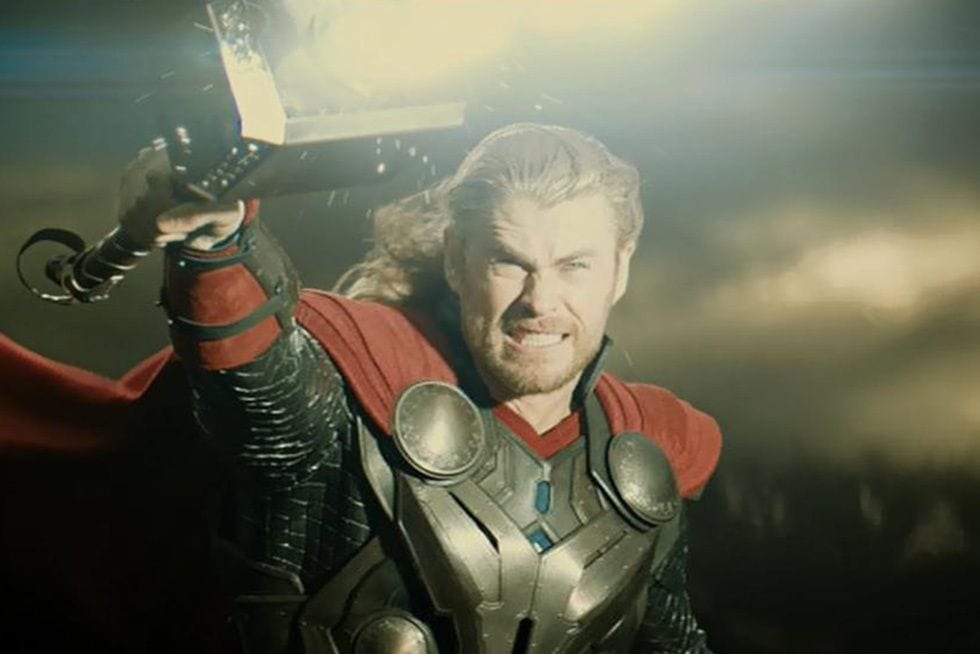
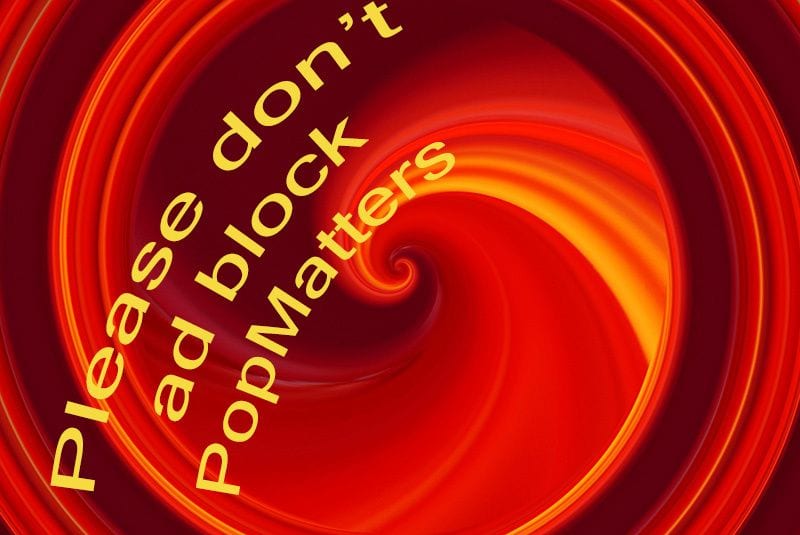
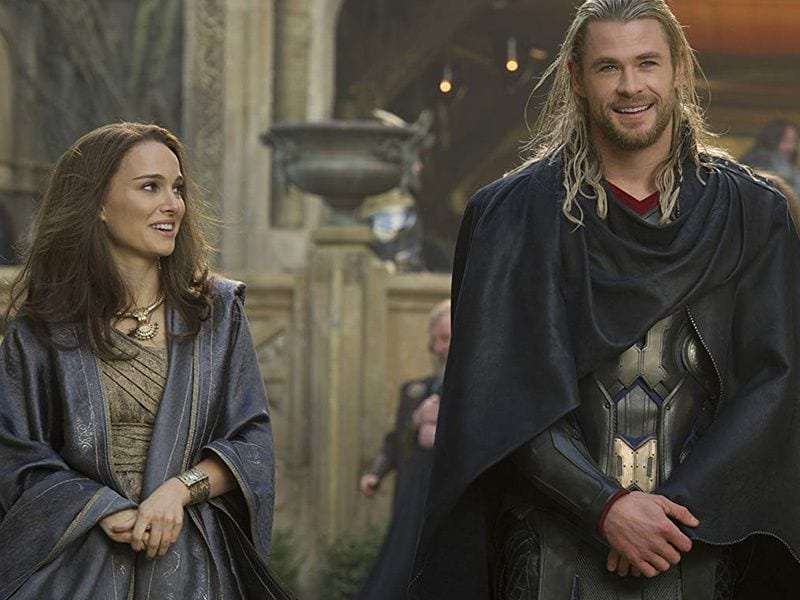
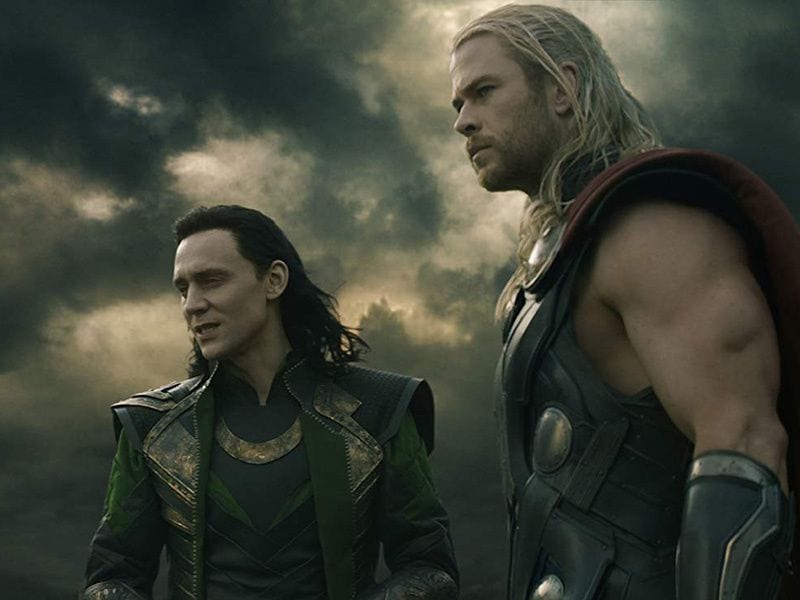
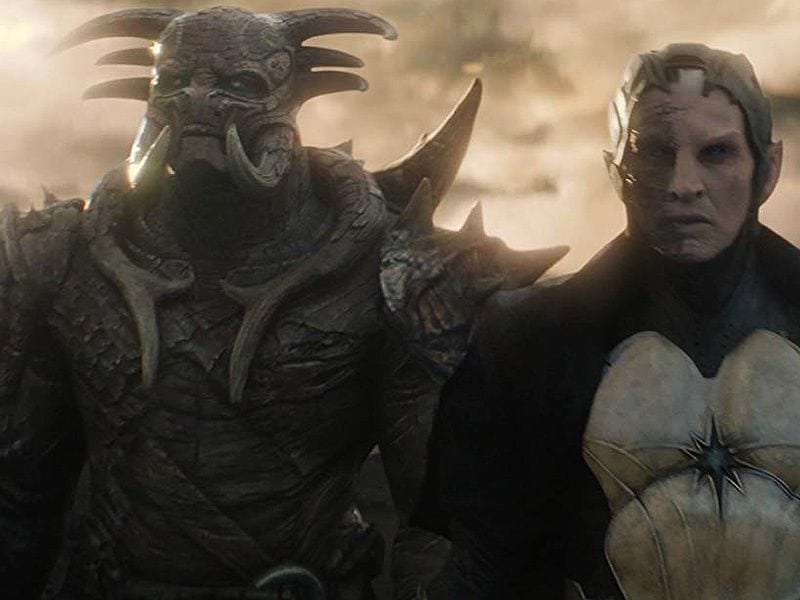
![Call for Papers: All Things Reconsidered [MUSIC] May-August 2024](https://www.popmatters.com/wp-content/uploads/2024/04/all-things-reconsidered-call-music-may-2024-720x380.jpg)



